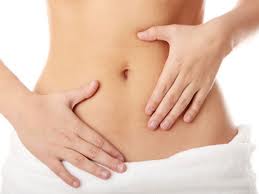Pelvic pain in women often characterized as pain below the belly button and hips. The exact location of the pain may be hard to pinpoint. When ask by your doctor, you may sweep your hand over the whole area instead of exactly locating a specific spot.
Pelvic pain may vary from one person to another. In some cases, a mild ache in the pelvic region may be felt by a woman before her monthly period. Some also feel bothersome pain that may come and goes. But other cases are considered chronic if the pelvic pain lasted for more than six months.
Women who feel pain in the pelvic should consider visiting their doctors right away since it can be a symptom of a more serious health problem. Do not simply ignore the pain because it may signify problems of reproductive system or growth of pelvis cyst,
What are the Symptoms of Pelvic Pain in Women?
Women who have pelvic pain may feel different symptoms. Some of the symptoms may include:
- Cramps during monthly periods
- Mild to severe pain in the pelvic area
- Pain in the pelvic that come and goes
- Heavy feeling in the pelvis
- Pain when urinating
- Pain during sexual intercourse
- Sharp and stabbing pain
- Pain while having bowel movement
If the symptoms are severe but the results of medical tests are normal, the doctor may also rule out depression because pelvic pain can also be a symptom of depression.
What are the Causes of Pelvic Pain in Women?
There are various possible causes or pelvic pain. Some of the causes may include:
- The presence of fibroids is one of the causes of pelvic pain. Fibroids are generally non cancerous however, it can cause a bothersome pressure just below the abdomen.
- Another culprit is irritable bowel syndrome (IBS). IBS symptoms like bloating or diarrhea can also cause pain in the pelvic region.
- Before the menstrual cycle, women can feel pain and heaviness but the condition may subside after the last day of menstrual period.
- Inflammation of the bladder and frequent urge to urinate may also cause sudden pain in the pelvis. The pain in the pelvis due to bladder inflammation may be reduced after urinating.
- Spasm in the pelvic floor muscles can result to chronic pelvic pain.
- Sexually transmitted disease may also cause scarring and pain in the pelvic organs thus resulting to constant pain in the area.
- Women who had undergo hysterectomy may develop pelvic pain especially if a small part of the ovary was left behind which may develop into cysts later on.
- Depression and pelvic pain is very much related. A depressed person may feel unexplainable pelvic pain. On the other hand, women who have pelvic pain may also developed depression since pain and restricted movement may lead to depression. Depression and pelvic pain can be part of a cycle that needs medical attention.
What are the Treatments for Pelvic Pain in Women?
Treatments for pelvic pain may vary depending on the cause. Here are the possible treatments for pelvic pain in women:
           1. Antibiotics
 Your doctor will run some test to know if the cause of pain is infection. If there is an infection, antibiotics are normally given to stop the infection.
Your doctor will run some test to know if the cause of pain is infection. If there is an infection, antibiotics are normally given to stop the infection.
           2. Hormone treatments
 Hormonal treatments are advised to women if the cause of the pain is menstrual cycle and hormonal changes. Pelvic pain and other symptoms associated with menstrual cycle may subside with hormone treatments. However, women should see their health care provider first before taking any hormone treatments. Patients should know the risks that maybe associated with this treatment.
Hormonal treatments are advised to women if the cause of the pain is menstrual cycle and hormonal changes. Pelvic pain and other symptoms associated with menstrual cycle may subside with hormone treatments. However, women should see their health care provider first before taking any hormone treatments. Patients should know the risks that maybe associated with this treatment.
3. Antidepressants
 If the pelvic pain is chronic, antidepressants are recommended especially if the person is having depression due to restricted movements and pain. This can also help in managing the pain.
If the pelvic pain is chronic, antidepressants are recommended especially if the person is having depression due to restricted movements and pain. This can also help in managing the pain.
Â
           4. Pelvic floor exercises
 Your physical therapist can recommend to you some pelvic floor exercises. This type of exercise can help in strengthening your pelvic floor muscles. It can also help in minimizing the pain.
Your physical therapist can recommend to you some pelvic floor exercises. This type of exercise can help in strengthening your pelvic floor muscles. It can also help in minimizing the pain.
           5. Surgery
 Surgery can be done if the cause of pain is growth of cyst inside. Other cases may also require removal of the uterus. However, this is the last option if the pain is severe and not all other conventional treatments worked. Talk to your physician first to know the risks of surgery.
Surgery can be done if the cause of pain is growth of cyst inside. Other cases may also require removal of the uterus. However, this is the last option if the pain is severe and not all other conventional treatments worked. Talk to your physician first to know the risks of surgery.
Pelvic pain in women is really a bothersome condition that needs medical care. Visit immediately your ob-gynecologist to rule out serious underlying problems.
